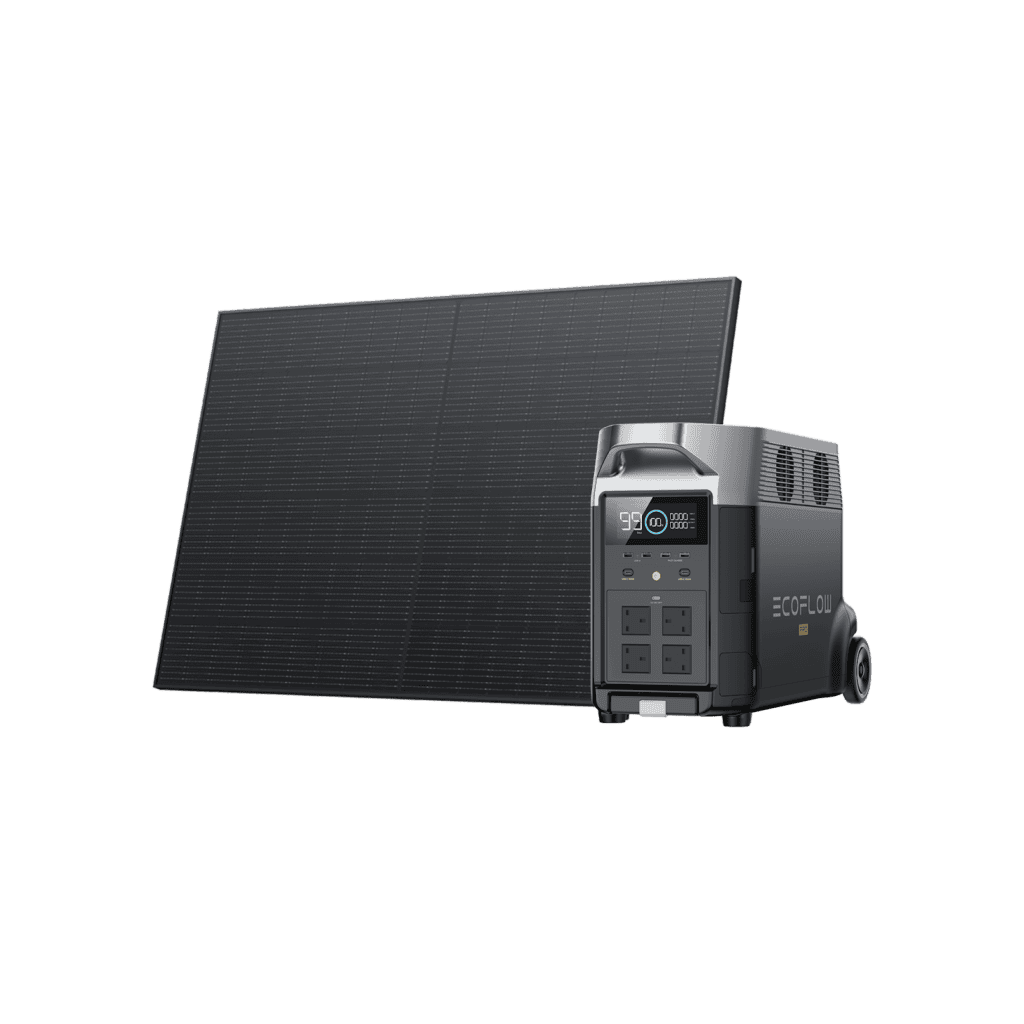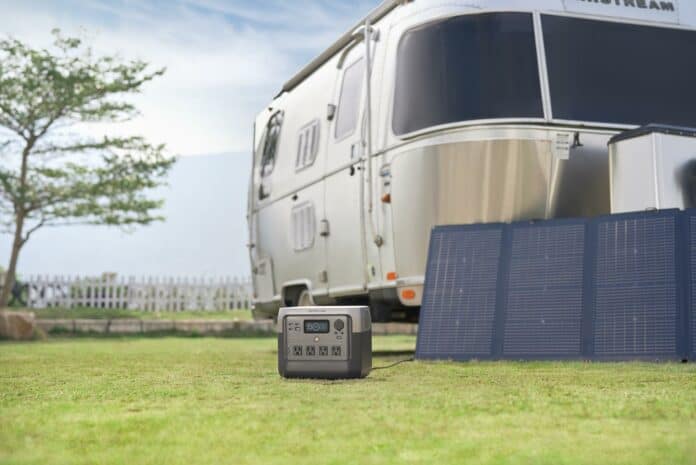Solar panels generate power for the electrical appliances and devices that make your motorhome feel like a real home, no matter where you go.
It’s the perfect solution for those who enjoy camping off-grid without having to rely on shore power or charging stations. And you don’t have to worry about the fumes, noise, and cost of running a fossil fuel generator.
But how many solar panels do you need to generate enough electricity for your ideal motorhome lifestyle?
Here’s how to calculate how many solar panels you need to power your motorhome off-grid and the various factors to consider when deciding what kind of panels to buy.
How Many Solar Panels Do I Need for My Motorhome?
The number of solar panels needed for your motorhome depends on various factors, such as the peak sun hours available in your location, your power consumption, and the solar panel’s output rating.
Let’s take a closer look at each.
Peak Sun Hours
Peak sun hours measure how much sunlight a particular location receives. A single peak sun hour is reached when the sun’s intensity averages 1,000 watts of photovoltaic power per square meter.
Understanding peak sun hour can help you estimate the amount of sunlight expected per day in a given location and how much electricity you can expect to generate.
The Global Solar Atlas is a good resource for finding out the average peak sunlight by location worldwide.
Solar panels suitable for motorhomes generally capture between 100w and 400w of solar power during peak sunlight hours.
Power Consumption
Your total daily power consumption will determine the number of solar panels you need. Each appliance requires a specific wattage to start and to operate.
The best way to determine how many solar panels you need for your motorhome is to calculate the total starting and running wattage requirements of the devices you want to operate.
Here’s how.
- Identify the wattage requirements of your appliances. Survey the starting and running wattage requirements of the appliances and devices you plan to plug into the generator. You can usually find the wattage requirements labelled on the appliance, but we’ve also compiled the starting and running watts of typical household appliances in the table below.
- Convert volts/amps to watts. If your appliance’s power requirements are in volts or amps, you can calculate an appliance’s running watts with this equation:
Volts (V) x Amps (A) = Watts (W)
- Count the running watts of your appliances. Add up the running watts of the appliances you plan to use — does the total exceed the running watts listed on your generator? If so, you should consider buying a generator with more output capacity.
- Factor in starting watt requirements. Identify the appliance with the highest starting wattage. Add that appliance’s starting wattage to the running wattage total.
- Calculate the sum. That final number is the total starting watts you need from your generator. As discussed above, to avoid overloading your generator, do not exceed its starting watts rating.
Starting and Running Watts of Typical Household Appliances
| Appliance | Rated (Running) Watts | Starting Watts |
| Dishwasher | 1300 | 1800 |
| Washing Machine | 1200 | 2300 |
| Refrigerator/Freezer | 700 | 2200 |
| Light Bulb | 60-75 | 0 |
| Microwave | 600-1000 | 0 |
| TV | 500 | 0 |
| Toaster | 900 | 0 |
| Vacuum | 1440 | 2500 |
| Coffee Maker | 1000 | 0 |
| Blender | 300 | 800 |
| Clothing Iron | 1500 | 0 |
| Dryer | 5400 | 7000 |
| Toaster Oven | 1200 | 0 |
| Curling Iron | 1500 | 0 |
| Space Heater | 2000 | 0 |
| Laptop | 50-300 | 0 |
| 20” Box Fan | 200 | 350 |
Solar Panel Output Rating
Lastly, you’ll need to look at the power rating of your panel. A 400-watt solar panel provides approximately 400 watts per hour of energy for every hour of peak sunlight.
Let’s say you receive 7 hours of peak sunlight hours. Assuming the panel has an output rating of 400 watts per hour, each panel can generate 2,800 watts per day. Other environmental factors — such as temperature — can affect how much electricity a solar panel actually generates.
If your daily consumption energy is 5,000 watts, you’ll need at least two 400W solar panels to power your motorhome’s appliances and devices.
Keep in mind that it’s unlikely you’ll receive 7 hours of peak sunlight each day. Solar panels can still gather energy on overcast or rainy days, but their output will be diminished.
Other Things to Consider When Going Solar
Other factors to consider when going solar include choosing the right solar panel type, your budget, your motorhome’s roof space, and available outdoor surface area that receive sunlight.
Choosing the Right Type of Solar Panel
When space is limited, the best choice is to go for the most efficient panels to produce the maximum energy per square foot. Monocrystalline panels are the most efficient in terms of capturing sunlight.
Polycrystalline panels are a middle-of-the-road choice that costs less but offers less efficiency than monocrystalline panels. Thin film flexible solar panels are lightweight and can be installed just about anywhere, but they have the shortest lifespan and the lowest efficiency.
Many motorhomers use ~110W panels, but there are also 400W panels, which are great for trailers.
Opting for panels with the highest rated power and efficiency that will fit your available space is the best way to maximize your electricity generation capabilities.
Sticking to Your Budget
Living the motorhome lifestyle may eliminate rent or mortgage payments. But you still need to pay for essentials like food and power and many other expenses, like petrol, maintenance, and camping fees.
Your budget and energy consumption needs will determine how much you should spend on a solar setup. If you plan to live entirely off-grid, a solution like the EcoFlow Power Kits is likely your best choice.
A fully off-grid solar setup requires a substantial initial investment, but it can save you money in the long run. You’ll no longer have to pay to stay at campsites with shore power — and you’ll achieve true energy independence.
How Much Roof/Exterior Space Do You Have Available?
A standard motorhome is 1.8 to 2.3 meters long, and the total exterior square meterage is about 11 M2.
But that doesn’t mean every inch is available for solar panels. Satellite dishes and other devices can eat into your surface area significantly.
Make sure to carefully map up an installation plan before purchasing your panels. Your available space will also determine how efficient your panels need to be.
Measure twice — cut once.
Is It a Permanent or Portable Solar Motorhome Setup?
Portable solar panels are lightweight, foldable, and can be placed anywhere, making them easy to store when not in use.
On the other hand, permanent setups using rigid and flexible solar panels affixed to your motorhome’s roof and exterior surfaces are far less mobile.
Portable setups can be a better way to get your feet wet with solar power, as they offer so much flexibility. A solar system using rigid and flexible solar panels requires careful planning and installation — however, it’s not overly complex.
A significant benefit of permanent installations is that you can collect solar power even when you’re on the road.
EcoFlow Power Kits
Setting up a permanent solar system can be complicated. Often, there are compatibility issues between each component. Mounting and wiring the system for maximum efficiency can also be a challenge.
The EcoFlow Power Kit is a compact modular solar power solution designed specifically for motorhomes. Each kit combines five components into an all-in-one Power Hub, saving you space and hassle. The 2 kWh and 5 kWh batteries can be stacked in threes, letting you expand the capacity to what you need.
Power Kits are a plug-and-play installation you can set up quickly without professional help. By using 48V wiring as opposed to 12V, you get more power in less space. The increased efficiency produces less heat and maximizes solar energy generation, output, and storage.

EcoFlow DELTA Solar Generators
EcoFlow DELTA Solar Generators like the DELTA Pro are a less expensive and more portable option than the Power Kits.
With its 3.6 kWh of battery storage capacity and 3.6 kW of output (both expandable), the DELTA Pro can support heavy-duty motorhome appliances, such as your fridge, TV, crockpot, air conditioner, lights, water heater, and more.
With extra batteries, you can expand DELTA Pro’s storage capacity to 25 kWh, making it perfect for high-volume users.
The Delta Pro offers multiple charging options, including solar, AC (household) electricity, EV charging stations, or your motorhome power adapter.
Final Thoughts
Switching to solar energy is becoming increasingly attractive for campers. No more searching for trailer parks with shore power and hookups. Or putting up with the deafening noise and toxic fumes of fossil fuel generators.
The first step to going solar is determining your energy consumption needs, available installation space, and what system fits your budget.
EcoFlow Power Kits and DELTA Pro solar generators can be the perfect solutions for your off-grid electricity needs. Use this guide to help you determine the right system for you and how many solar panels you need for your motorhome.







